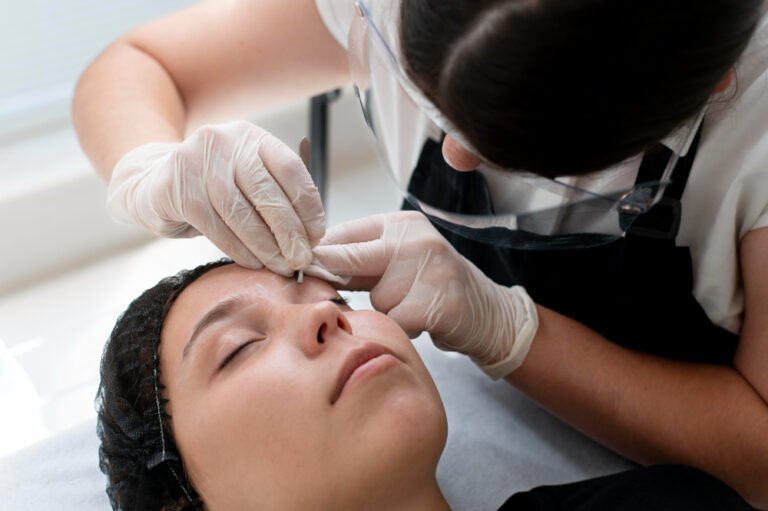For many men, concerns about penile size can affect self-confidence and quality of life. Fortunately, medical advancements have introduced several options for penile enhancement. Two of the most popular methods are penile fillers and penile enlargement surgery. But how do you know which one is right for you?
In this guide, we’ll explore the pros, cons, results, recovery, and safety considerations of penile filler injections versus surgical penile enlargement—so you can make a confident, informed decision.
Understanding Penile Enlargement
Penile enlargement procedures aim to enhance girth (circumference) and/or length of the penis. While the average penis size falls within a normal range, individual perception and psychological factors often lead men to seek enhancement for aesthetic or confidence reasons.
There are two main clinically approved categories:
- Non-surgical penile fillers
- Surgical penile augmentation
Let’s explore each in more detail.
Option 1: Penile Fillers
What Are They?
Penile fillers are injectable substances—usually hyaluronic acid (HA) or other biocompatible dermal fillers—used to increase penile girth (not length). They work by adding volume beneath the skin of the penis, resulting in a thicker appearance.
Procedure Overview
- Duration: 30–60 minutes (outpatient)
- Anesthesia: Local anesthetic
- Recovery: Minimal downtime; mild swelling/bruising
- Results: Immediate, lasts 12–24 months depending on filler type
Advantages
- Non-surgical & minimally invasive
- Reversible (in the case of HA-based fillers)
- Quick recovery
- No general anesthesia required
Disadvantages
- Temporary results (repeat treatments may be necessary)
- No length increase
- Possible complications: uneven results, lumps, vascular issues
Option 2: Penile Enlargement Surgery
Surgical procedures offer a more permanent solution and can target both girth and length depending on the technique.
Types of Surgery
- Penile Lengthening Surgery
- Involves cutting the suspensory ligament to allow more of the penile shaft to extend outward.
- Average length gain: 1–2 inches (in flaccid state; limited effect when erect)
- Girth Enhancement Surgery
- Involves fat grafting, dermal matrix grafts, or silicone implants to add volume.
- Silicone implants (like the Penuma implant) offer a more stable, longer-term solution than fat transfer.
Procedure Overview
- Duration: 1–2 hours
- Anesthesia: General or regional anesthesia
- Recovery: 2–6 weeks
- Results: Permanent (though minor revisions may be needed)
Advantages
- Permanent enhancement
- Possible increase in both length and girth
- High satisfaction in properly selected patients
Disadvantages
- Invasive with longer recovery
- Risks of infection, scarring, or nerve damage
- Visible scars or altered penile angle
- Higher cost than fillers
Filler vs. Surgery: Which Is Right for You?
| Feature | Penile Fillers | Surgical Enlargement |
|---|---|---|
| Invasiveness | Non-surgical | Surgical |
| Downtime | Minimal | 2–6 weeks |
| Girth Improvement | Yes | Yes |
| Length Improvement | No | Possible (surgical lengthening) |
| Reversibility | Yes (HA fillers) | No |
| Longevity | 12–24 months | Permanent |
| Cost | $$ | $$$$ |
| Risks | Mild (lumps, swelling) | Higher (infection, nerve damage) |
Important Considerations Before Choosing
- Motivation: Are you doing this for personal confidence or due to unrealistic expectations?
- Health Status: You must be in good health to undergo surgery.
- Expectations: Realistic expectations are crucial for satisfaction.
- Budget: Fillers may require repeat treatments, while surgery is a larger upfront investment.
- Provider Experience: Choose a board-certified urologist or plastic surgeon with experience in male enhancement procedures.
Final Thoughts
Both penile fillers and surgical enlargement have their place in modern aesthetic medicine. If you’re seeking a quick, reversible option to increase girth, fillers might be ideal. If you’re looking for a more permanent solution that addresses both girth and length, surgery could be worth considering—provided you understand the risks and recovery involved.
Always consult with a qualified specialist to evaluate your goals, anatomy, and health status. With the right guidance, you can choose the safest and most effective enhancement strategy for you.




